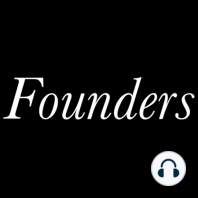58 min listen
#18 Let My People Go Surfing: The Education of a Reluctant Businessman
FromFounders
ratings:
Length:
57 minutes
Released:
Jan 8, 2018
Format:
Podcast episode
Description
What I learned from reading Let My People Go Surfing: The Education of a Reluctant Businessman by Yvon Chouinard.I had always avoided thinking of myself as a businessman. I was a climber, a surfer, a kayaker, a skier, and a blacksmith. We simply enjoyed making good tools and functional clothes. [0:01] One day it dawned on me that I was a businessman and would probably be one for a long time. I knew that I would never be happy playing by the normal rules of business; I wanted to distance myself as far as possible from this pasty-faced corpses in suits I saw in airline magazine ads. If I had to be a businessman, I was going to do it on my own terms. [0:32] One of my favorite sayings about entrepreneurship is: If you want to understand the entrepreneur, study the juvenile delinquent. The delinquent is saying with his actions, “This sucks. I’m going to do my own thing. [1:00]Work had to be enjoyable on a daily basis. [1:18]I’ve always thought of myself as an 80 percent. I like to throw myself passionately into an activity until I reach about an 80 percent proficiency level. To go beyond that requires an obsession and degree of specialization that doesn’t appeal to me. Once I reach that 80 percent level I like to go off and do something totally different. [4:05]Tom Brokaw on Yvon: It’s been helpful to me to be Yvon’s friend. He makes me think about things in new ways. [5:36] Can a company that wants to make the best-quality outdoor clothing in the world be the size of Nike? Can a ten-table, three-star French restaurant retain its third star when it adds fifty tables? The question haunted me throughout the 1980s as Patagonia evolved. [7:35]I continued to practice my MBA theory of management, management by absence, while I wear-tested our clothing and equipment in the most extreme conditions of the Himalayas and South America. [10:13] Throughout the book he’s has a really beautiful idea of comparing business and organizing human labor, to nature. Part of this idea is he intentionally puts Patagonia through a lot of stress because he feels you need stress to grow. [11:42] Doing risk sports had taught me another important lesson: Never exceed your limits. You push the envelope, but you don’t go over. You have to be true to yourself; you have to know your strengths and limitations and live within your means. The same is true for business. The sooner a company tries to be what it is not, the sooner it tries to have it all, the sooner it will die. [18:05] I did not yet know what we would do to get our company out of the mess it was in. But I did know we had to look to the Iroquois and their seven-generation planning, and not to corporate America, as models of stewardship and sustainability. As part of their decision process, the Iroquois had a person who represented the seventh generation in the future. If Patagonia could survive this crisis we had to begin to make all our decisions as though we would be in business for a hundred years. [19:12] The first part of our mission statement, “Make the best product,” is the cornerstone of our business philosophy. “Make the best” is a difficult goal. It doesn’t mean “among the best” or the “best at a particular price point.” It means “make the best,” period. [24:05]The functionality driven design is usually minimalist. Or as Dieter Rams maintains, “Good design is as little design as possible.” Complexity is often a sure sign that the functional needs have not been solved. Take the difference between the Ferrari and the Cadillac of the 1960s. The Ferrari’s clean lines suites its high-performance aims. The Cadillac really didn’t have any functional aims. It didn’t have steering, suspension, aerodynamics, or brakes appropriate to its immense horsepower. All it had to do was convey the idea of power, creature comfort, of a living room floating down the highway to the golf course. So, to a basically ugly shape were added all manner of useless chrome: fins at the back, breasts at the front. Once you los
Released:
Jan 8, 2018
Format:
Podcast episode
Titles in the series (100)
#1 Elon Musk: Tesla, SpaceX, & the Quest for a Fantastic Future: What I learned from reading Elon Musk: Tesla, SpaceX, and the Quest for a Fantastic Future by Ashlee Vance by Founders
